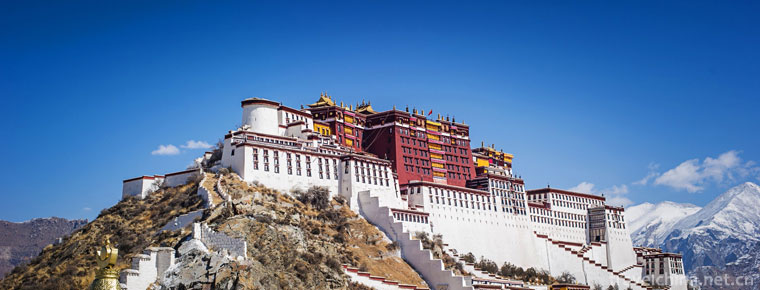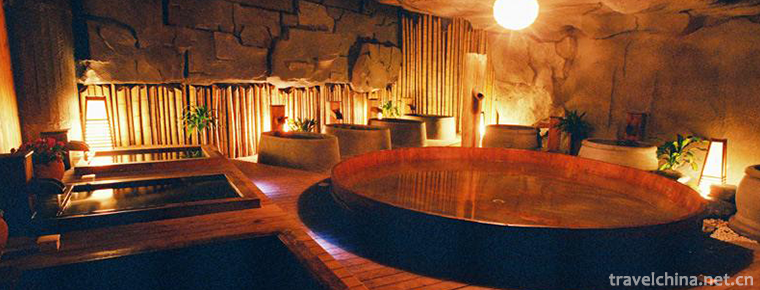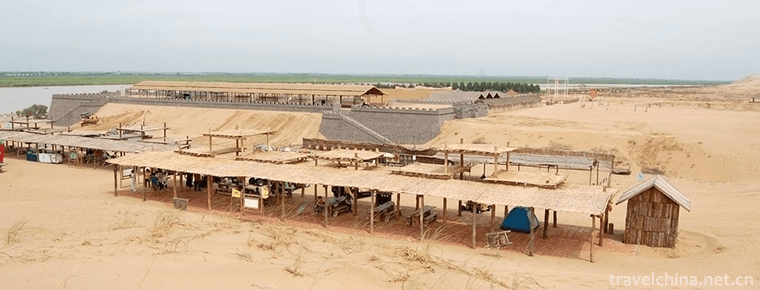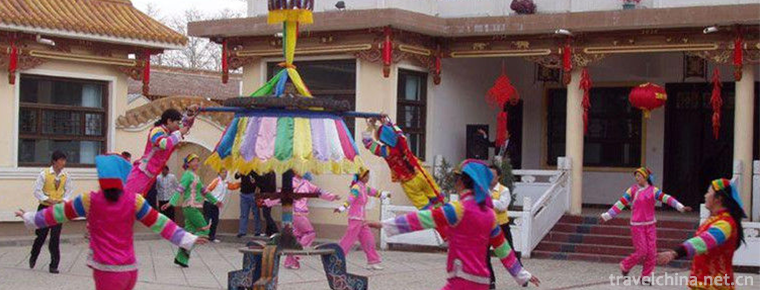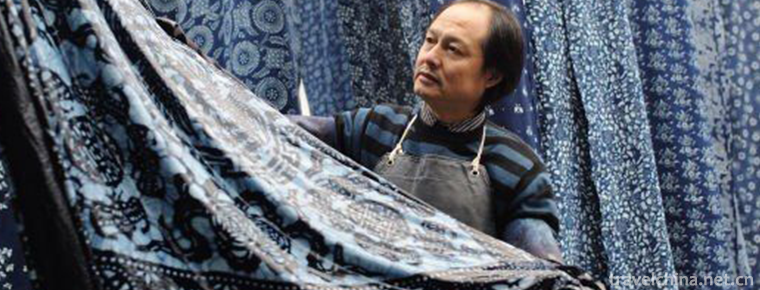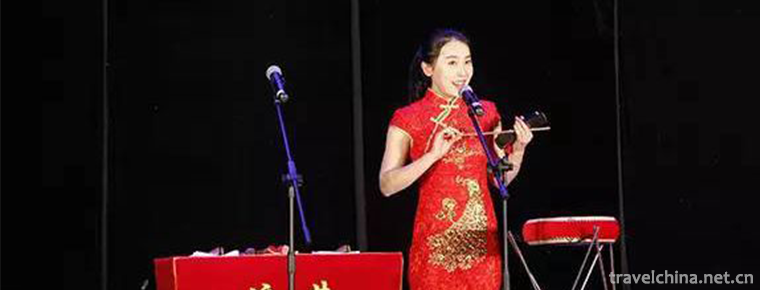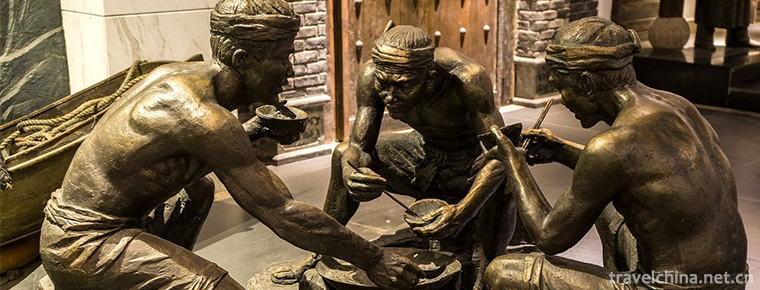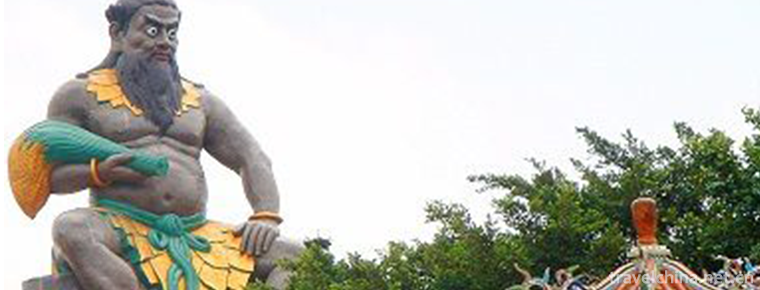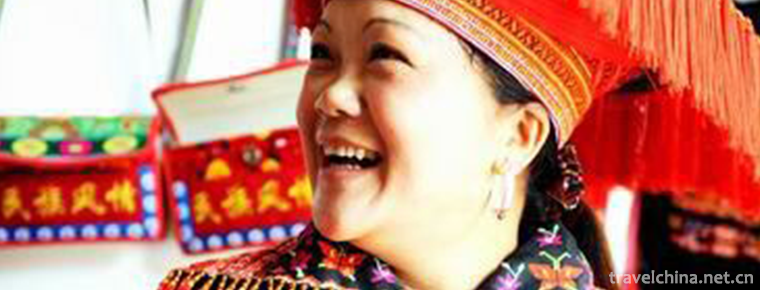Legend of White Horse Dragging
Legend of White Horse Dragging
The legend of white horse dragging rein is spread in Baima Temple in Jincheng, Shanxi Province. Baima Temple Mountain was originally named Sima Mountain. It is said that the Chang Ping Hou of Jinsi Ma Yifeng once climbed the mountain and got his name. Located in Jincheng, Shanxi Province.
In May 2011, the legend of white horse dragging rein declared by Jincheng City of Shanxi Province was listed in the third batch of national intangible cultural heritage list with the approval of the State Council.
historical origin
"Zezhou Prefecture annals" records: "Sima Mountain has the old name of the Wei stele. It was also said that the White Horse followed the Tang monk's Sutra from the West Heaven and had once traveled to this mountain. Later generations built the White Horse Zen Temple as a memorial. Sima Mountain was renamed Baima Temple Mountain. The legend of "white horse runs out of control" has been widely spread in Jincheng area, and has been circulating for more than 2000 years. The Records of Zezhou Prefecture, Fengtai County, Urban District, Jincheng Folklore Integration and Urban Cultural Relics are all recorded. Wei Cao Zhi wrote in "White Horse Chapter" that "White Horse is decorated with golden restraint, flying northwest continuously, asking whose family is younger and knight-errant". The poem depicts the cool and heroic posture of the heroic teenagers, and expresses the ideological details and strong feelings of the Baima teenagers .
The legendary content of "white horse runs out of control" can be divided into three types: 1. Myth and legend. There are "White Horse Juvenile", "Legend of Horse Thieves", "Legend of General White Horse" and so on; 2. Buddhist legends. There are "The Legend of the Baima Temple Mountain Grottoes", "The Legend of the Iron Egg" and so on; 3. Historical legends. There are "The Story of the White Horse Running Out in the Battle of Changping", "The Legend of the White Horse God Skillfully Helping Zhou Shizong" and so on. These legendary stories are all based on "Bai Ma She Sheng takes righteousness" as the main line, with local customs, religious worship, historical allusions, natural landscape as the main creative background and source of inspiration, vivid plot, rich content, magnificent and simple nature, deeply influenced by Buddhist culture, full of strong folk color and local characteristics.
primary coverage
Summary of the Story of White Horse Dragging
There is a kind of pebble on the mountain of Zhemasi, the outer solid is hollow and the rocking sound is loud. It is called horse bell stone. According to legend, there was a teenager in ancient times, witty and kind. Every day he went up the mountain to collect firewood for the wealthy man, rain or shine. Nevertheless, they are often beaten by the wealthy because of the lack of firewood. One day, he came back to collect firewood. On his way, he met an old man who asked him for firewood to keep warm. He saw the old man frozen, regardless of the danger of less firewood being beaten, and generously applied firewood to the old man. The old man took a paper horse from his bosom and gave it to the young man. He told him that it was a magic horse. It was a little white dragon that Tang monk had ridden when he took sutras. If he wanted it, he would find Millennium cereal grass and let it eat it, and it would show itself immediately. When the teenager returned home, there was a sudden gale and a blizzard all night. The next day, despite the snow and wind, the wealthy man forced the teenagers into the mountains to collect firewood. Teenagers think of paper horses hidden in their arms, but Millennium millet grass go ah to find it? Suddenly, he remembered that a thousand-year-old Buddha statue had been destroyed in the Baima Temple on the mountain. He clearly remembered that the skeleton of the Buddha was made of cereal grass. So he immediately went to the temple and took out a grain grass from the Buddha statue. The paper horse in the bosom swallowed at once, shook his head and wagged his tail, and suddenly became a snow-white horse, and went into the mountains to carry charcoal for the young. When the rich man learned that he wanted to take possession of Shenma, he conspired with his family to steal horses in the middle of the night and was kicked to the ground by the white horse. The teenager wakes up from his sleep, jumps on his horse's back, and goes away with the white horse. The bell is torn off by the rich man and scattered to the ground. It becomes a bellstone that rings immediately. A mountain ridge dragged by the white horse's rein is still barren. This is the origin of Ma Lingshi and the story of "white horse dragging its reins" which is one of the four major scenic spots in Jincheng.
Inheritance significance
The legend of white horse pulling rein in the legend of "white horse pulling rein" reflects the brilliant light of Buddhist culture. The "White Horse Spirit" of perseverance, loyalty and kindness, self-sacrifice and positive progress is an indispensable spiritual force in the process of building a harmonious society. Now Baima Temple Mountain has become an important tourist resource in Jincheng City. Zhao Puchu, vice-chairman of the CPPCC National Committee and President of the Chinese Buddhist Association, once inscribed the name of the monastery. The grass that was pulled off by the rein of the white horse is still a long slope. The scattered copper bells have become the stone of ringing bells, two wonders of Baima Temple Mountain, and one of the "four great scenic spots" in Jincheng City.
Inheritance status
In the course of historical evolution, the legend of "white horse runs out of control" has been passed down from generation to generation through oral transmission, affecting the minds and sentiments of the working people in Jincheng, stimulating the enthusiasm and confidence of the people to overcome difficulties and build a better home. At present, under the influence of market economy and the change of social and cultural environment, the social foundation on which the legend of "white horse runs out of control" relies for survival and development has undergone tremendous changes, and no one is interested in collecting, sorting out and working.
In recent years, in order to carry forward the legend of "white horse runs out of control", which is an excellent folk cultural heritage, the city government attaches great importance to it and invests more funds to increase propaganda. From 2006 to 2009, the legend of the sitcom "white horse runs out of control" and the animated film "story of white horse runs out of control" have been written and produced successively. Particularly in primary and secondary school students to carry out the "white horse juvenile" activities. Good results have been achieved. In 2008, it was listed as the first batch of intangible cultural heritage protection projects at district level in urban areas. In 2009, it was listed in the second batch of provincial intangible cultural heritage list of Shanxi Province.
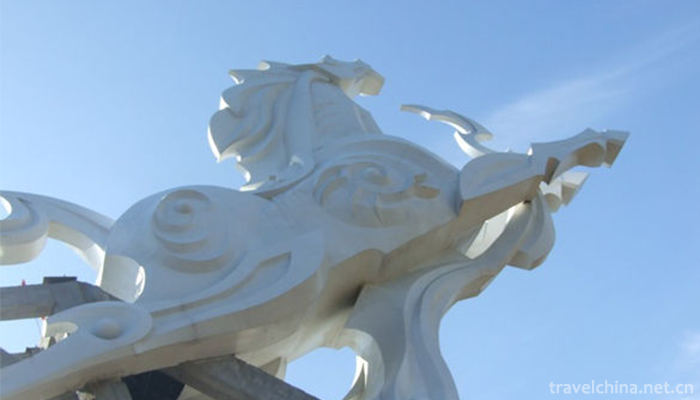
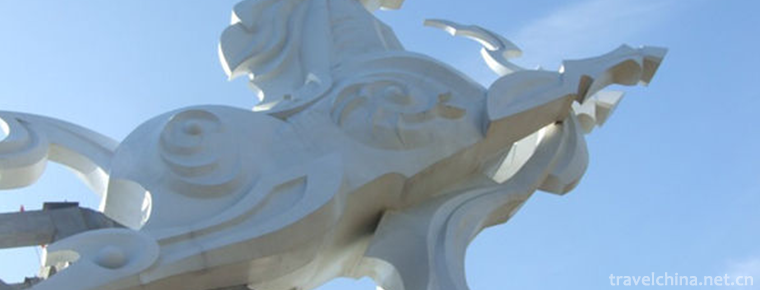
Legend of White Horse Dragging
-
Dongshan Lake Hot Spring Resort
Dongshan Lake Hot Spring Resort is the first national AAAA-level scenic spot in Chaozhou City. It is located in the Dongshan Lake scenic spot of Shaxi Town at the junction of Chaozhou
Views: 159 Time 2018-12-19 -
Huang Sha ancient ferry
The original eco-tourism scenic spot of Huangsha Gudu is one of the eight scenic spots of Ningxia in Ming and Qing Dynasties, including the national AAAA-level tourism scenic spot, the National Wetlan
Views: 171 Time 2019-01-18 -
Mars Manor Scenic Spot
Ma's Manor, located in Xijiang Village, 20 kilometers west of Anyang City, Henan Province, is the mansion of Ma Piyao, governor of Guangdong Province in the Qing Dynasty.
Views: 163 Time 2019-02-06 -
Yasuaki
Anzhao is an ancient Tu dance. It's popular with mutual aid. When celebrating festivals, harvest celebrations and weddings, people gather in the courtyard or on the wheat threshing ground to dance the
Views: 207 Time 2019-04-02 -
Printing and Dyeing Techniques of Blue Printed Cloth
The printing and dyeing technology of blue printed cloth is a kind of anti-dyeing and printing method of indigo printed cloth. The dye is extracted from Polygonum multiflorum.
Views: 261 Time 2019-05-11 -
monologue storytelling accompanied by drumbeats
Plum blossom drum, born in the middle of the Qing Dynasty, originated in Beijing, is popular in Beijing and Tianjin. Before liberation, the sons and daughters of Beijing Banner People liked to sing me
Views: 273 Time 2019-06-03 -
Copper Carving Skills
Hangzhou bronze sculpture is the continuation of ancient bronze manufacture. It developed greatly in Wuyue and Southern Song Dynasty. After Tongzhi in Qing Dynasty, Hangzhou bronze sculpture represent
Views: 182 Time 2019-06-21 -
Legend of Emperor Yan Shennong
Yan Emperor Shennong, one of the three emperors and five emperors, is one of the local folklores in Suizhou, Hubei Province, and is the national intangible cultural heritage. After Wa Fuxi, a stepdaug
Views: 221 Time 2019-07-10 -
Yao Costume
Yao people used to call themselves "Guoshan Yao", "Hongtou Yao", "Dabanyao", "Pingtouyao", "Blue Indigo Yao", "Shayao" and "Baitou Yao&
Views: 309 Time 2019-07-11 -
Dagu Glacier
Dagu iceberg scenic area is located in Heishui County, Aba Tibetan and Qiang Autonomous Prefecture, Sichuan Province, China, 102.44.15-102.52.46 E and 32.12.30-32.17.06 n, which is a rare modern mountain glacier.
Views: 365 Time 2020-11-07 -
Guangan waterway
Guang'an port is a "port group" composed of Guang'an port area, Huaying port area, Yuechi port area and wusheng port area distributed in Guang'an section of Qujiang River and Jialing River. Guang'an port is an important support for industrial lay
Views: 378 Time 2020-12-19
